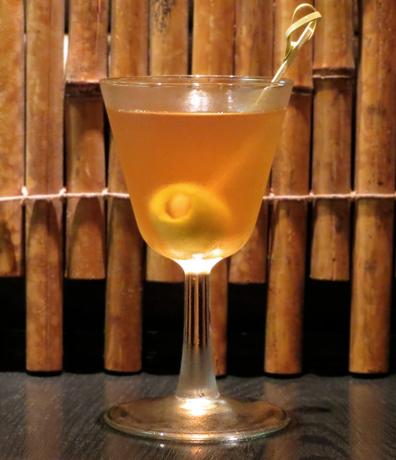Sherry, other than being a hit song for Frankie Valli and the Four Seasons, is etched in many people’s minds as a sketchy elixir, along the lines of sloe gin, crème de menthe or anything else collecting dust in your grandmother’s liquor cabinet.
The most well-known brand is Harvey’s Bristol Cream, a product that may be the all-time king of cheesy advertising. In my childhood, long before I truly understood the meaning, I remember learning about women’s liberation from a Christmas commercial that aired in 1978 (available on YouTube). In this tacky classic, a woman invites herself to a man’s apartment so she can “slip something under his tree.”
Sherry remained off my radar for the next 20 years or so, until an accidental meeting when my boyfriend, Glenn Sorvisto, and I were on a three-week Iberian road trip. Our circular route stretched from Madrid to the Basque Country, then along the Portuguese coast and into Andalucía.
It was right after we crossed back into Spain from Portugal’s Algarve when – as happened many times during the trip – we got lost, ending up in the Sherry Triangle. In this region, defined by Spanish law, I had my first adult run-in with sherry.
Sherry is a fortified wine (meaning that extra alcohol is added), primarily made from Palomino, Moscatel and Pedro Ximénez grapes. The towns of Jerez de la Frontera, Sanlúcar de Barrameda and El Puerto de Santa María are the three corners of the Sherry Triangle. Sherry can only be produced in this region, and many of the bodegas (wine cellars) welcome visitors.
The limestone-based soil provides perfect conditions for growing these types of grapes. Sherry is aged and blended using a solera system, in which wine rotates through a series of older and older barrels.
Though we didn’t go to a winery, I got a delightful lecture on sherry from the host at a tapas bar where we stopped for lunch. After spending a day in Lisbon educating myself at the Port Wine Institute (and OD’ing on sangria everywhere else on the trip), I was eager to try something new.
As we nibbled on freshly cured ham, olives and egg tortillas, we were treated to samples of different sherry varieties. I always thought of sherry as sweet. My biggest surprise was finding out that roughly 90 percent is dry. And I discovered that, like Port wine, the flavor and characteristics of different sherries can vary tremendously.
I tasted sherries from both ends of the spectrum. On one side was fino, a very dry, light-bodied sherry, strawlike in color. On the other was oloroso: dark in color, rich in flavor and served with manchego cheese. In between was a nutty-flavored amontillado. To satisfy my sweet tooth, I finished with a cloying Pedro Ximénez sherry.
If you want to experience the warm ambiance of Andalucía, you don’t need to cross the pond. Just head to 7th Street, NW. Derek Brown, the man behind the Columbia Room and Eat the Rich, and his wife Chantal Tseng, formerly of the Tabard Inn, have teamed up at Mockingbird Hill, a ham and sherry bar inspired by their visits to Spain.
Complementing a selection of Spanish-influenced dishes and local hams at Mockingbird Hill are 54 varieties of sherry. The best way to start is with a sample flight, similar to my introduction in Spain. Or – as you would expect in a bar run by D.C.’s mixology power couple – you can order a sherry cocktail.
Tseng enjoys sherry in a number of ways. She recommends the Cheribita, dry fino sherry served over ice with orange bitters and a lemon peel. Sometimes she combines sherry with other spirits: “Sherry and vermouth, sherry and gin, sherry and bourbon, sherry and scotch, sherry and aged rum, sherry and tequila.” Says Tseng, “Sherry is simply versatile.”
According to Tseng, sherry mixes well in cocktails because it shares characteristics with many ingredients. “Sherry is super-complex and can taste anywhere from oyster shells, ocean spray, apples, lemongrass, chamomile, white flowers and chalk to almonds, peanuts, hazelnuts, walnuts, apricots, gingerbread, baking spices, chocolate, marzipan, figs, etc.,” she says.
“Sherry mixes with something and retains its personality. It gets along with so many different ingredients but never loses itself in them. It goes from an elegant accompaniment to the rich backbone of a drink depending on how you use it.”
Her favorite cocktail on the menu is the Bamboo, a combination of fino sherry and Dolin dry vermouth with a dash of orange bitters.
So it’s time to let go of all your sherry clichés and expand your horizons. Let the helpful staff at Mockingbird Hill guide you on your sherry discovery path. ?
The Bamboo
1.5 ounces fino sherry
3 ounces Dolin dry vermouth
Dash of orange bitters
Combine ingredients and stir. Garnish with a lemon peel.
You can try a Bamboo or a sherry flight at Mockingbird Hill, 1843 7th St., NW.


